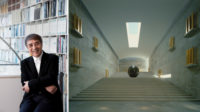With a November 16 party attended by several hundred members of Melbourne’s arts, design, and cultural community, as well as government officials, the Naomi Milgrom Foundation celebrated the completion of this year’s MPavilion, designed by Pritzker laureate, Tadao Ando, in the city’s Queen Victoria Gardens. At only 4,000 square feet, the commission is diminutive compared to most of his other projects, causing him to at first hesitate on the commission. But Ando accepted the “modest request,” he says, “because I believe architecture resides in people's hearts and endures, regardless of size.”
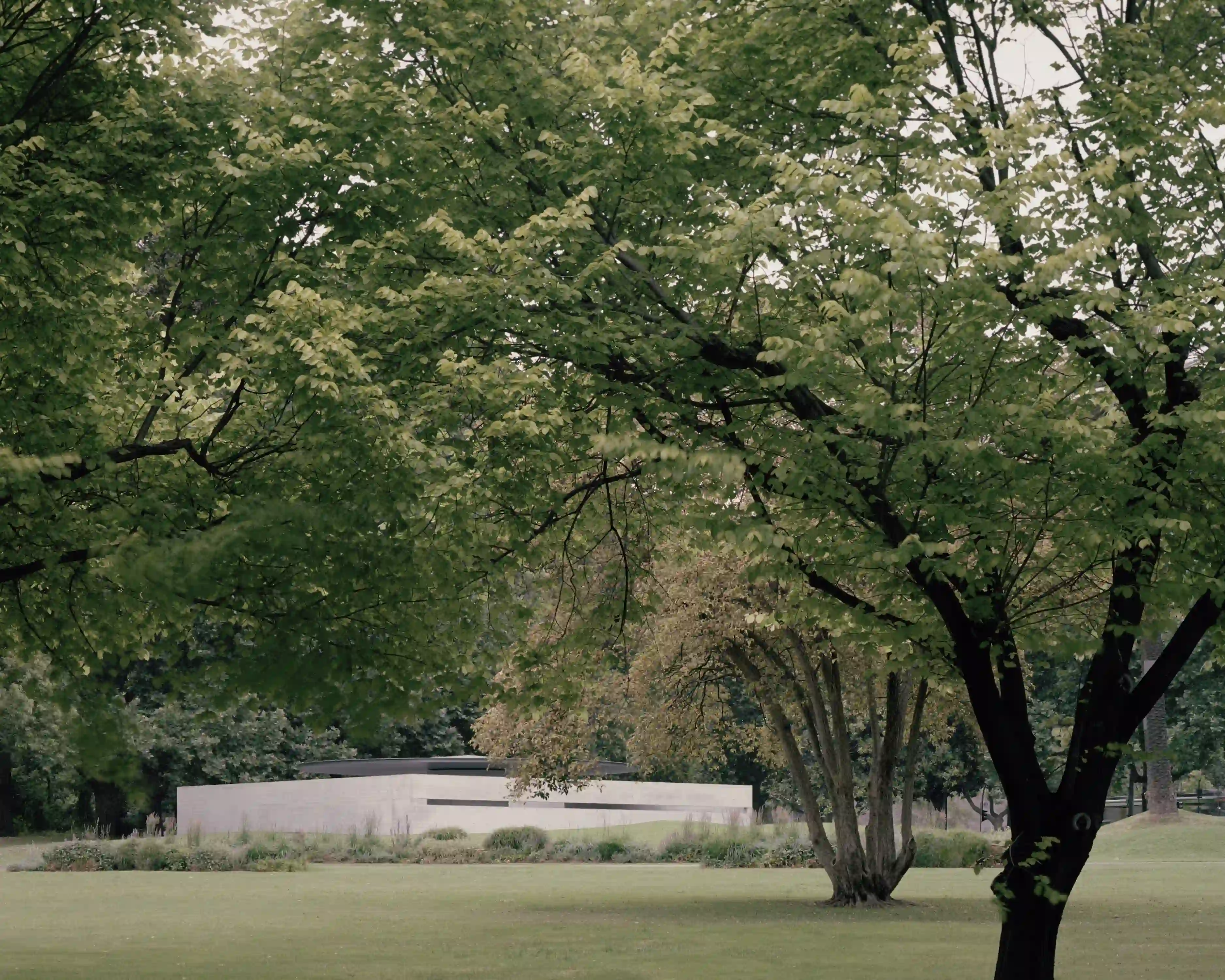
Photo © Rory Gardiner
The pavilion, the Japanese architect’s first work in Australia, is executed in his signature material—poured-in-place concrete. It comprises two interlocking U-shaped sets of walls defining a room largely open to the sky, but partially sheltered by a 47-foot-diameter parasol-like canopy. Paved in local bluestone, about half of the space is taken up by a shallow pool, whose recirculating water throws its rippling reflections onto the underside of the hovering roof. Running nearly the whole length of the enclosure’s 64-foot-long north and south walls, eye-level slits frame horizontal views of the surrounding greenery and allow passersby to peer inside before deciding to enter. Fashion entrepreneur Naomi Milgrom, founder of the eponymous non-profit organization, is clearly pleased with the outcome. “I never ever imagined concrete as such a sensual material...or gray as such a joyful color,” she said in her opening remarks.
In line with the foundation’s mission of enhancing the presence of creative culture in Australia, and in Melbourne in particular, the pavilion will serve not just as a place for quiet contemplation, but as the setting for free public programming encompassing workshops, talks, and performances, extending from the spring through the early autumn. In connection with the pavilion, the foundation has commissioned several related projects sympathetic to Ando’s architecture, including seating for visitors. Designed by local firm Davidov Architects, the lightweight pine stools feature a circle inscribed in a square. Similarly, Melbourne-based clothing “micro-label” DNJ Paper has designed a vest of pink Japanese handmade paper, or washi, to be worn by MPavilion staff throughout the season.
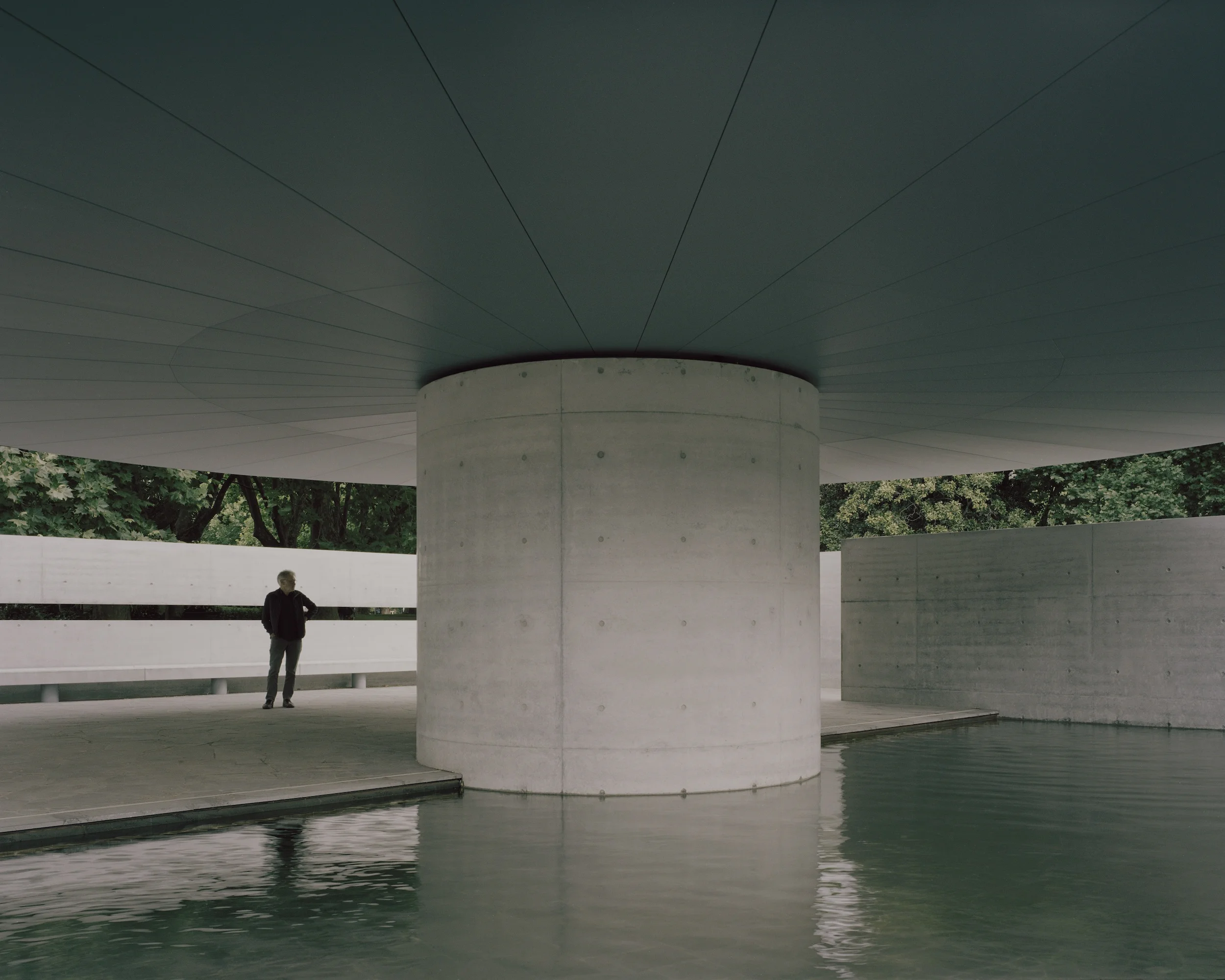
Photo © Rory Gardiner
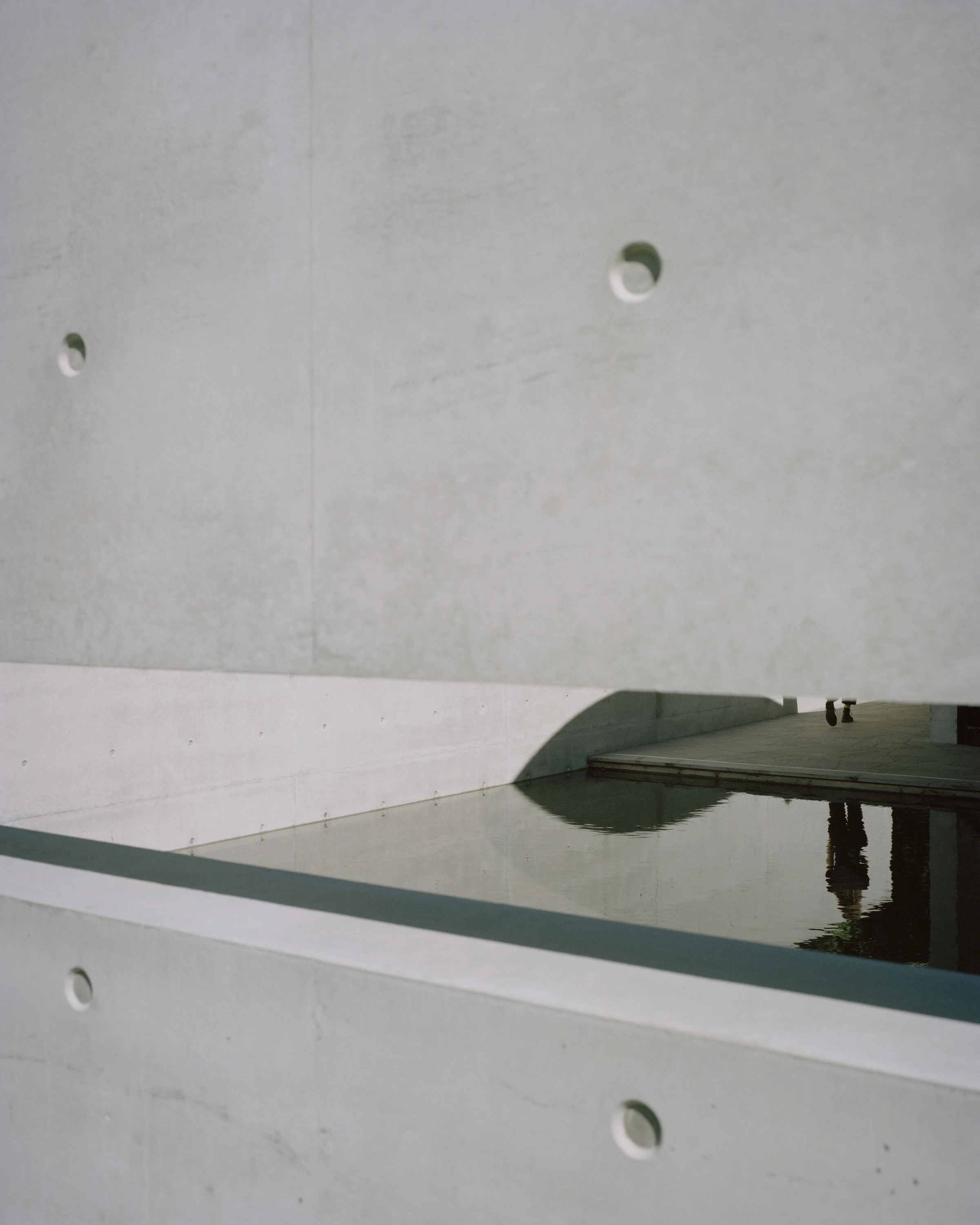
Photo © Rory Gardiner
Ando’s structure, referred to as MPavilion 10, is the latest in a series that started a decade ago with an annual commission for a shelter on the same site, each by a different design firm, often from outside Australia, including Bijoy Jain from Mumbai, OMA from Rotterdam, MAP studio from Venice, and all(zone) from Bangkok. Integral to the concept behind the program, at the end of the MPavilion season, the structure is to be dismantled and then donated to a public park or an educational or cultural institution. For instance, the 2019 pavilion by Australia’s own Pritzker winner, Glenn Murcutt, is now at the University of Melbourne; the 2015 pavilion, by London-based Amanda Levete, is in a park in the city’s Docklands; while the 2018 pavilion, by Catalonian architect Carme Pinós, is currently being re-erected at Monash University’s Peninsula campus, in Frankston, a southeast Melbourne suburb. So far, seven of the previous MPavilions have been gifted to organizations and public spaces in and around Melbourne.
Ando, 82, and rumored to be in poor health, did not travel from Osaka for the opening, or during the course of the project. However, he was deeply involved, says Melbourne-based Sean Godsell, who served as executive architect and was also designer of the very first MPavilion, in 2014. (MPavilion 1 is now installed at the Hellenic Museum Melbourne). According to Godsell, Ando kept close tabs on MPavilion 10’s construction process and sent his associates to the site to inspect concrete mockups.
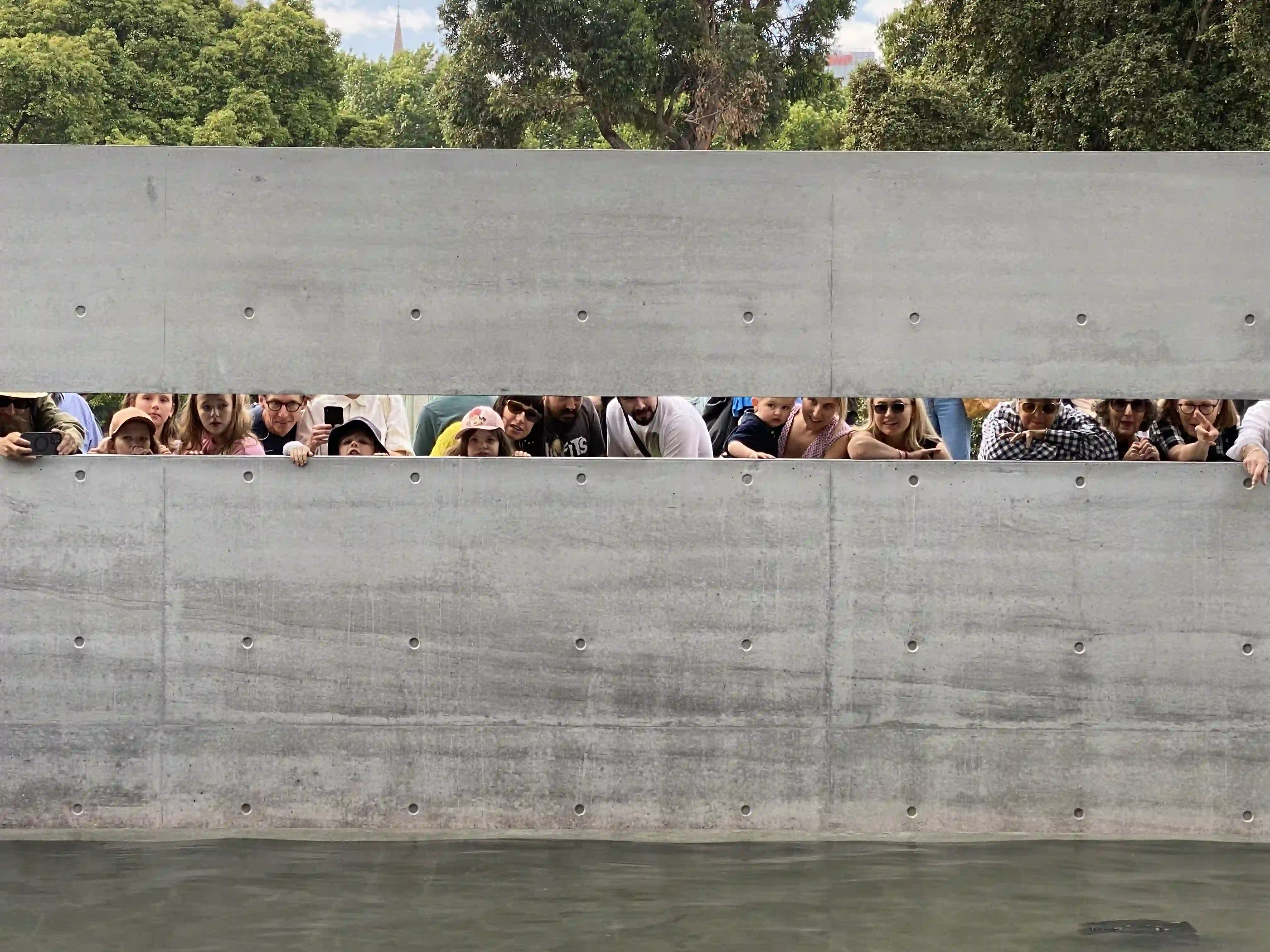
Visitors at an opening weekend event. Photo © Architectural Record
The result is a project that displays the precision that Ando’s work is known for. Given the MPavilion program’s mandate for relocation, however, poured-in-place concrete seems a curious choice as a primary material, the structure’s rigor and obvious beauty notwithstanding. Although the central parasol—which was fabricated offsite and has a steel armature under its aluminum cladding—and a precast bench along the length of the enclosure’s south edge, could readily be dismantled and reassembled elsewhere, the rest does not lend itself to disassembly. Milgrom offers that the walls could be cut from their foundations (a laborious and exacting process). Godsell, meanwhile, says the concrete could be used as aggregate and the steel rebar recovered and recycled for a rebuilt pavilion, an option, that would obviously first require the structure’s complete demolition.
But the best plan, Godsell implies, is for MPavilion 10 to stay right where it is, in Queen Victoria Gardens—indefinitely. “If it were my decision, I would leave it,” he says. For now, though, it is slated to remain only until early autumn, through late March 2024, at least officially.



